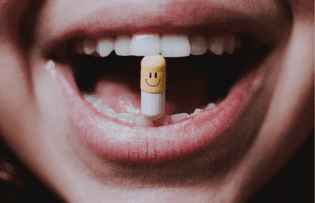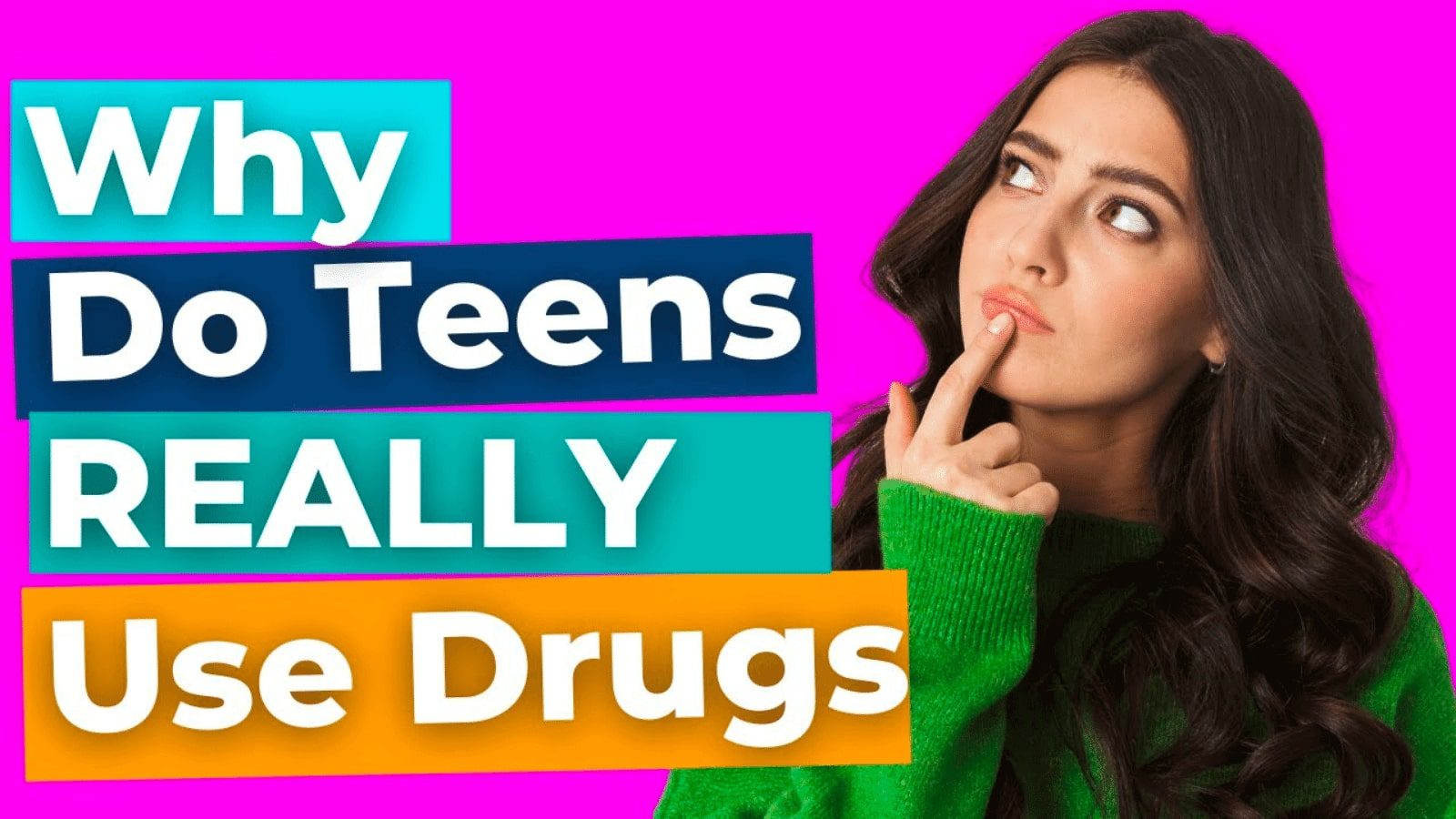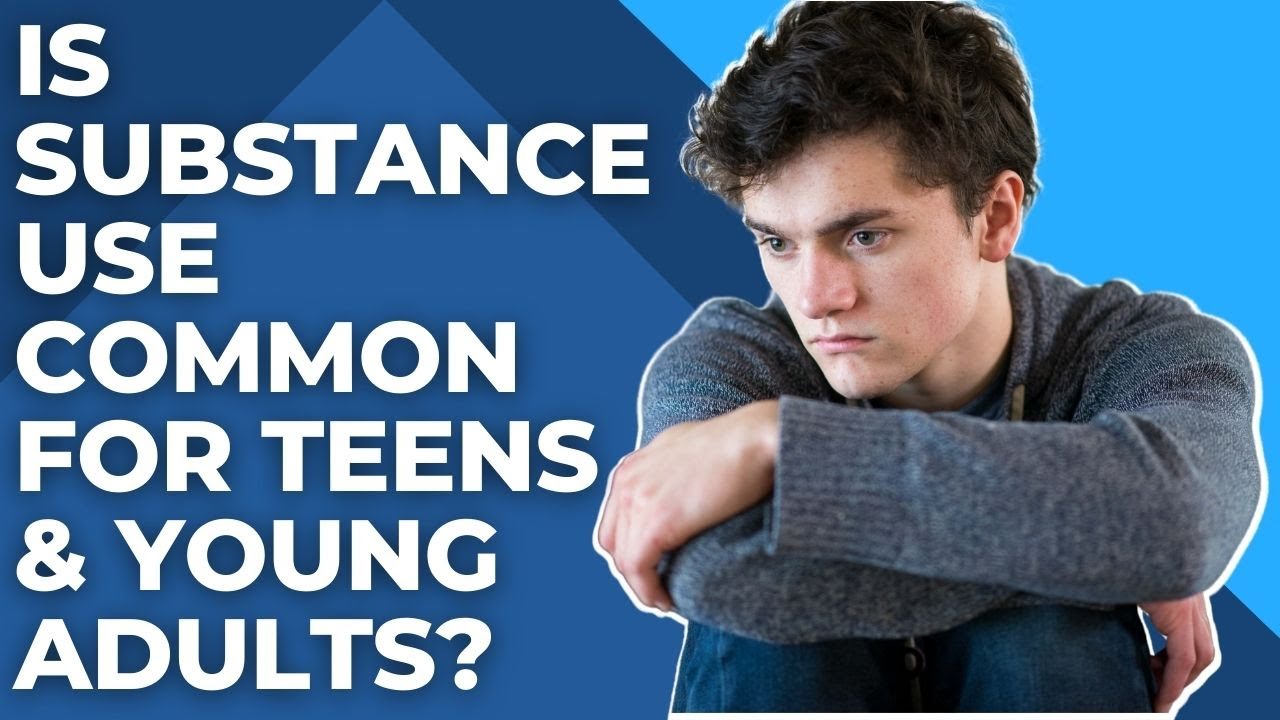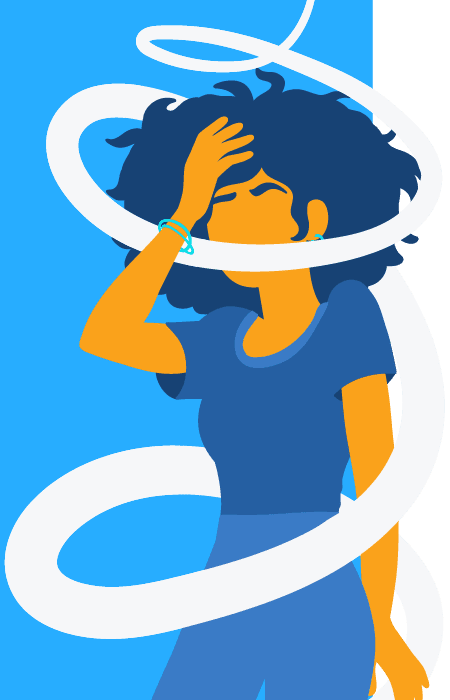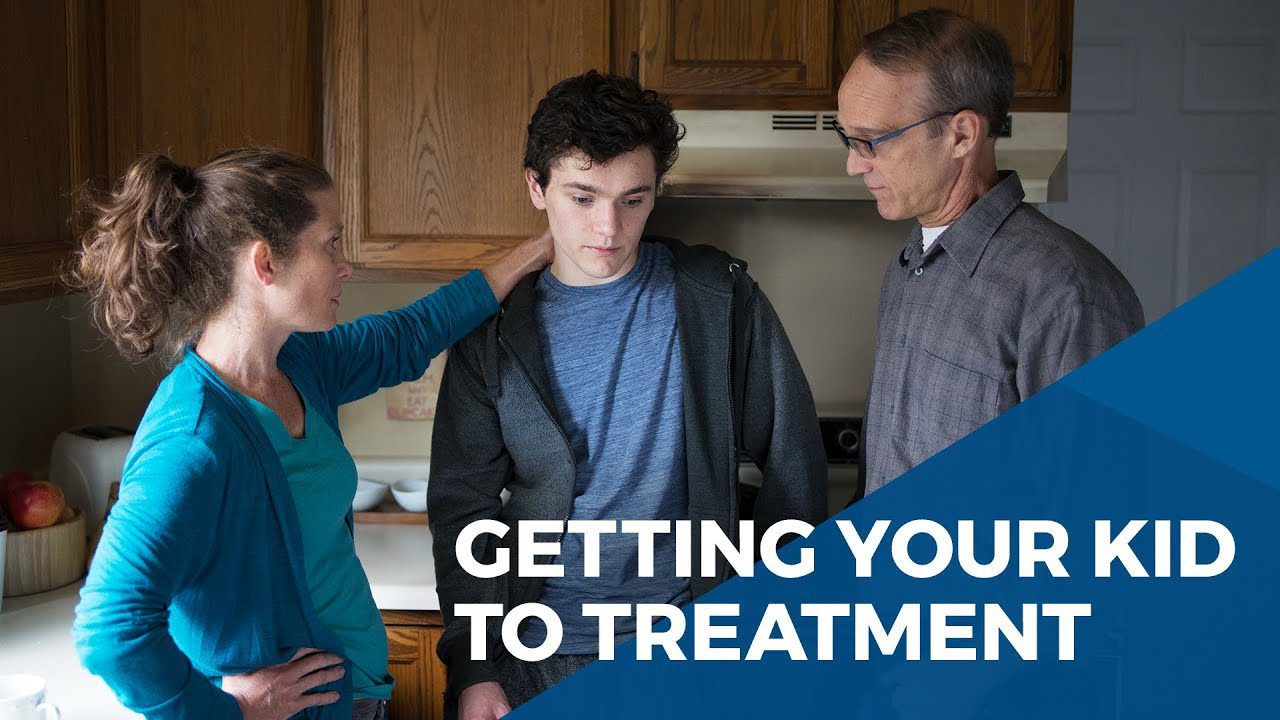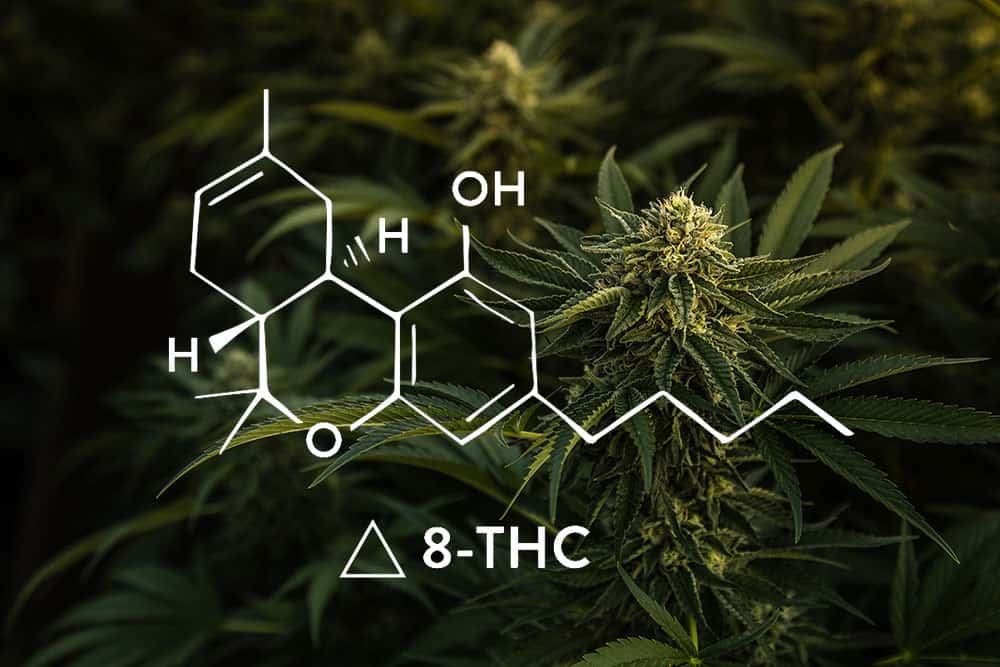What Is The Number One Drug Used By Teens?
The number one drug used by teens differs from year to year, but the most commonly used include alcohol, tobacco, and marijuana.
Alcohol remains the most commonly used drug by teens.
According to the NIH, in 2020, 61.% of high school students had consumed alcohol at some time in their lives.
Binge drinking is common among older teens. Taking part in binge drinking as a young adult can become a risk factor for developing an alcohol addiction later on in life.
Teens commonly use alcohol, tobacco, and marijuana because of the ease of accessibility.
Alcohol use comes along with a lot of dangerous risks. Drinking at a young age can make it more likely for youth to experience school and social problems, physical and sexual violence, and lead to misuse of other substances.
Often, teens turn to drugs as an unhealthy coping mechanism. They may be trying to deal with stress, painful emotions, or lessen social anxiety.
The use of over-the-counter medicines is also common among teens because they are easily accessible and have mood-altering abilities.
Cocaine, heroin, and methamphetamines are drugs that are known to be used by older teens.
According to 2021 Monitoring the Future survey results from the NIH, the percentage of any past-year illicit drug use was reported as follows:
8th graders: 10.2%
10th graders: 18.7%
12th graders: 32.0%
The illicit drugs referred to in this survey include; marijuana, LSD, other hallucinogens, cocaine, and heroin.
Illicit drugs are substances that either stimulate or inhibit the central nervous system. Some illicit drugs also have hallucinogenic effects.
Additionally, prescription drug use is not uncommon among teens. According to SAMHSA, prescription drugs are the most commonly misused substances after drugs and alcohol. This applies to Americans aged 14 and older.
The National Survey on Drug Use and Health reported more than 5,700 youth in 2014 misusing prescription drugs.
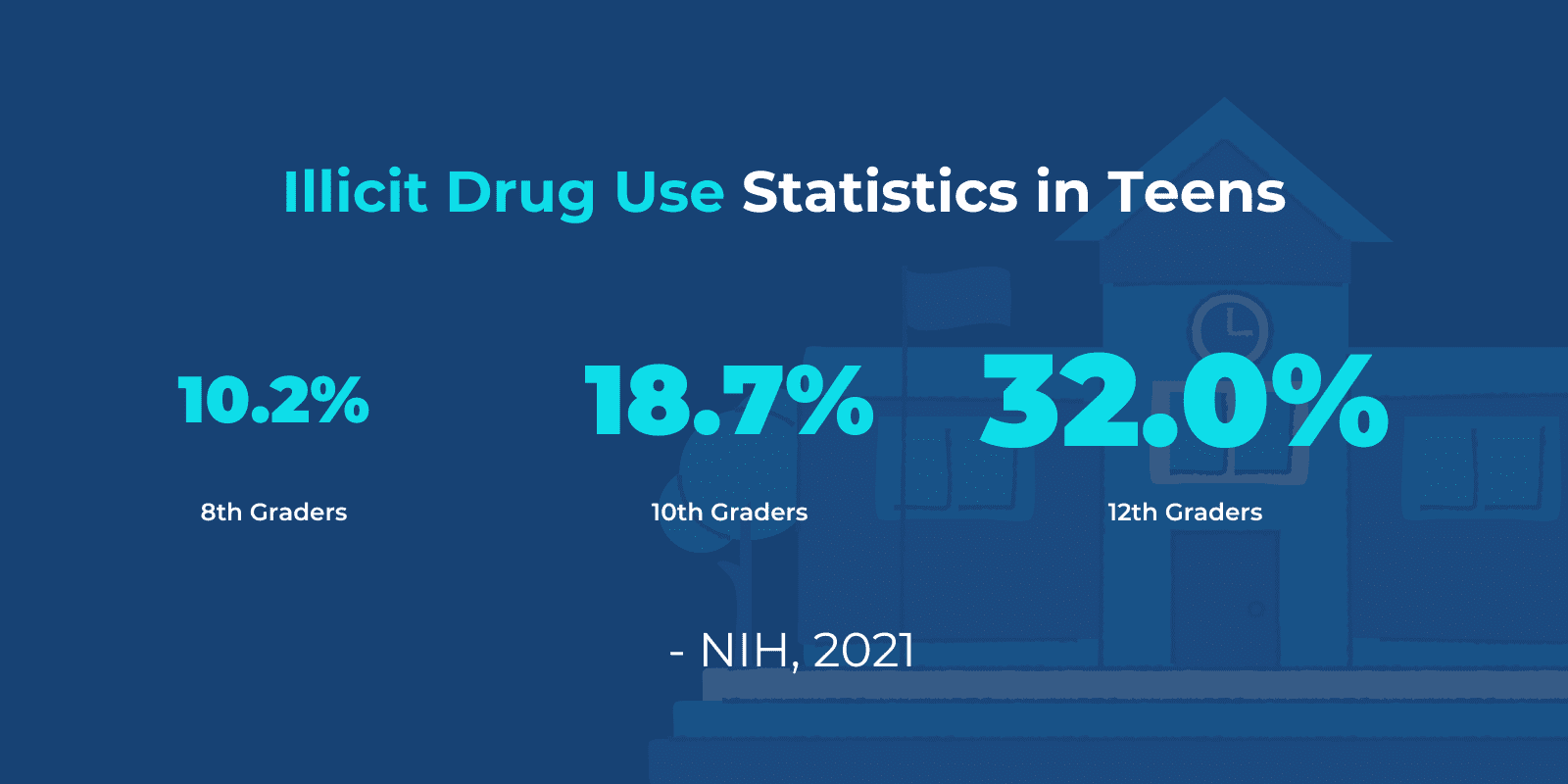
Different types of prescription drugs include stimulants, opioids, and depressants.
Common stimulants can be Adderall and Ritalin.
Adderall improves focus and is commonly misused to enhance performance in academics. When misused, it can lead to heart attack, liver failure, and heighten the risk of fatal overdose when taken with other substances.
Examples of opioids include fentanyl, heroin, and Oxycontin. Teens commonly misuse opioids because they may be curious or want to fit in. Many young people also report that they obtained these medications from friends or family.
Depressants are misused when taken without a prescription, taken a different way than prescribed, taken to get “high,” or taken with other substances.
Inhalants are known to be used by younger teens.
Inhalants refer to substances that people can take only by inhaling. Toxic chemicals that are found in everyday household items like nail polish, glue, or computer dusters can create an immediate high.
Inhalants are common among teens because they are legal and easy to purchase.
Misusing multiple substances at once is extremely dangerous and can increase the chance of accidental fatal overdose.
Teenage drug use is a common and dangerous problem, and it is important to be aware of warning signs that your adolescent or teen may be using drugs. Parents can also take preventative measures to help their children from using drugs.
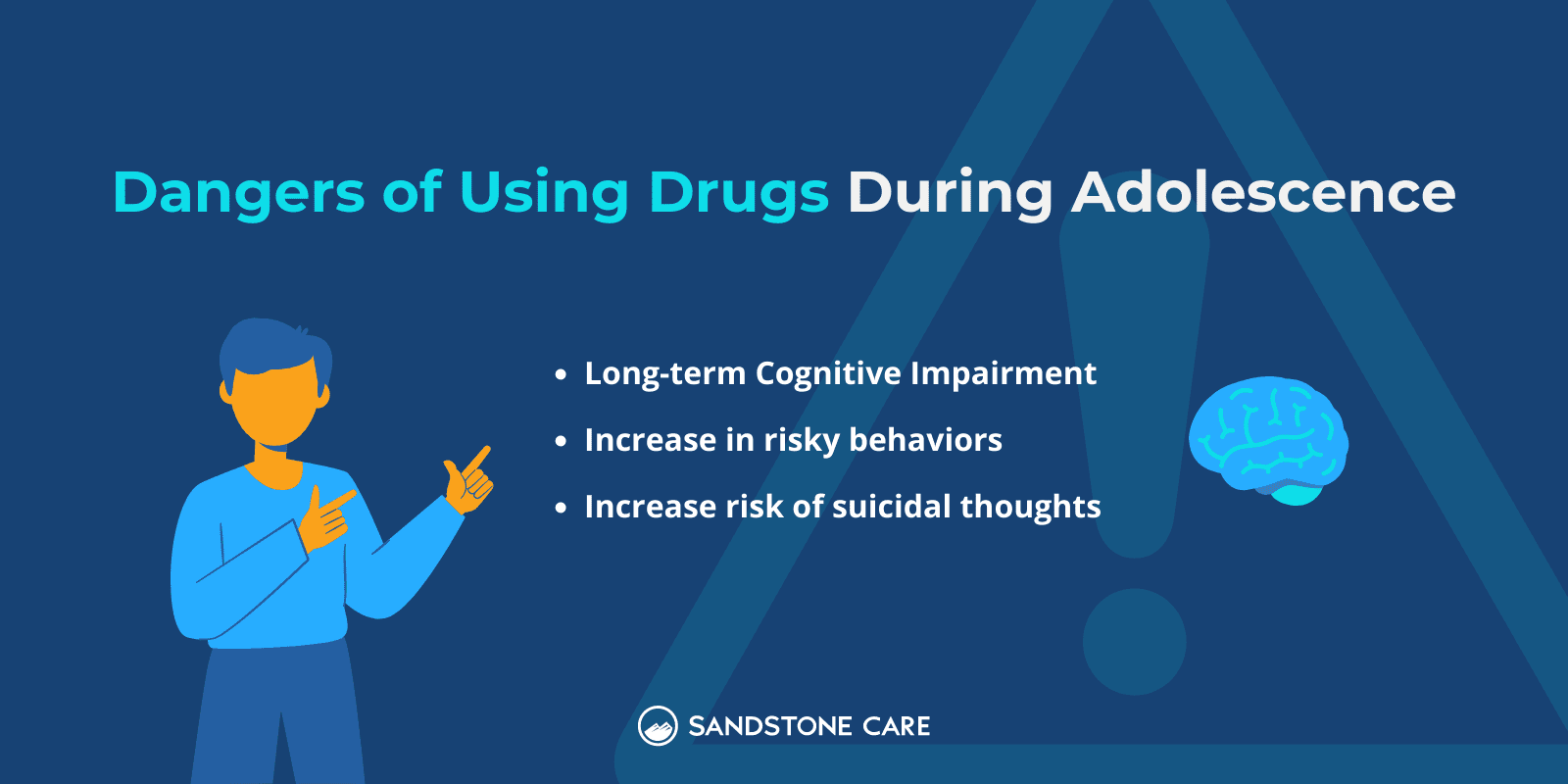
What Are The Dangers Of Using Drugs During Adolescence?
Using drugs during adolescence can have negative impacts mentally, physically, and psychologically.
During adolescence, a person’s brain is still undergoing major development. The use of drugs can interfere with this and impact processes such as decision-making, impulse control, attention, and memory.
Drug use at a young age can alter brain maturation and lead to long-term cognitive impairment.
The impact drugs have on the adolescent brain can also put adolescents more at risk of drug addiction and developing a substance use disorder early or later on in life.
Drugs eventually lead to significant changes in neurons and the brain’s circuits when used repeatedly. These changes can last for a long time, even after someone stops using drugs.
Adolescents who use drugs are more at risk of engaging in risky behavior.
According to the CDC, the dangers of drug use include an increase in sexual risk behavior, experience of violence, and mental health and suicide risks.
Other examples of risky behavior may include driving under the influence, taking part in illegal activities, or risky use of social media.
Both mental health disorders and substance abuse issues increase the risk of suicide in teens. Additionally, if drugs are misused, the person is at risk of accidental fatal overdose.
The physical and mental effects of drugs differ based on the type of drug. Some drugs can cause serious effects after a single use.
Substance abuse is also dangerous because of its link to an increased risk of suicidal thoughts.
Which Teenager Is At Greatest Risk For Drug Use?
The younger someone is when they use substances, the more at risk they are for developing a substance use disorder.
Teenagers genetically predisposed or have a history of trauma are also at risk for drug use.
Additionally, substance use disorders commonly co-occur with other mental health disorders.
It is a lot more likely that a teen will use drugs if they are around friends or family who use drugs. It makes it a lot easier for a teen to get drugs.
Seeing the people they love and their peers use drugs enforces the idea that it is acceptable and encourages them to try it for themselves.
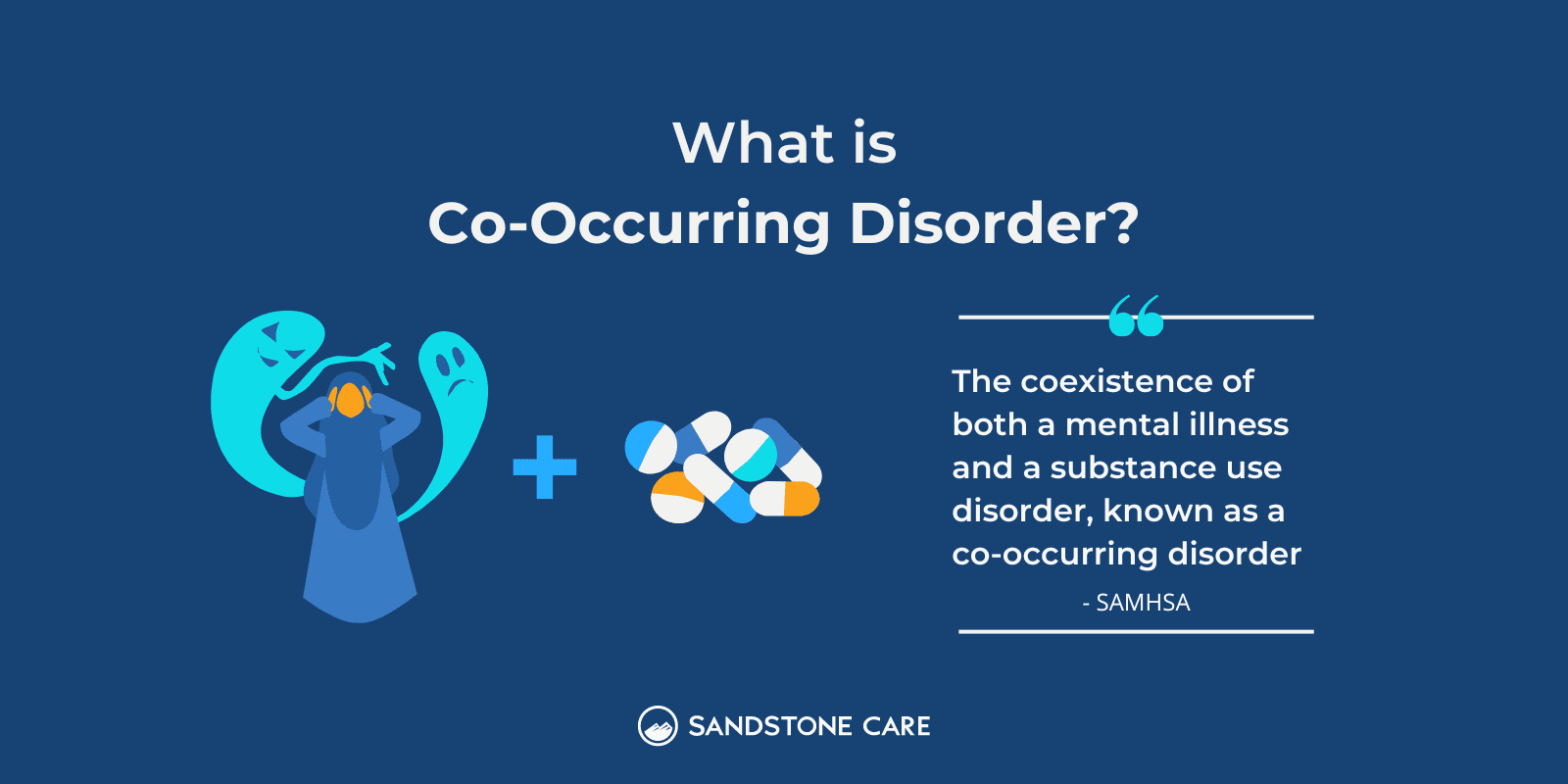
What Are Risk Factors Associated With Adolescent Drug Use?
Some of the most significant risk factors associated with adolescent drug abuse include:
- Traumatic life experiences such as; sexual abuse, child abuse, death of someone close to them
- Exposure to drugs while in their mother’s womb
- Genetics
- Being in an environment or around people where drug use is prevalent
- Family history of substance use
- History of mental health issues
- Low academic success
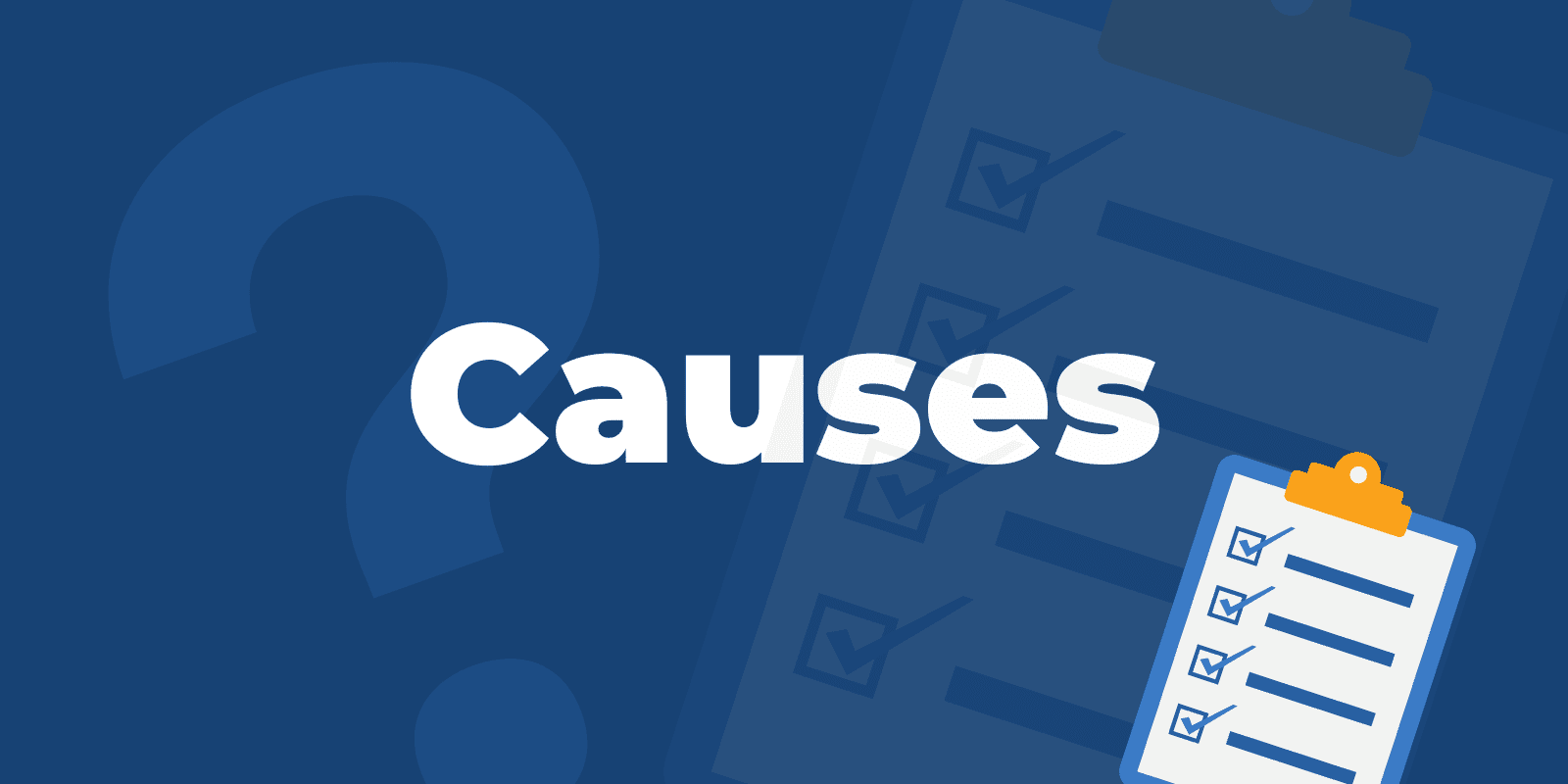
What Causes Teen Drug Abuse?
Teens may begin to abuse drugs for a variety of reasons.
One can include the effects of peer pressure.
Teens may see their other friends abuse drugs and be convinced to try. They may also be under the impression that everyone is doing it, so they want to fit in.
Transitioning between adolescence and the teenage years can come with feelings of self-consciousness. This can make youth try anything possible to feel better about themselves or feel accepted.
Since adolescents and teens are going through a lot of changes in their lives, they may have a negative self-image and turn to drugs to compensate for it.
Many things are new when becoming a teenager, and it may be a lot easier to access things that you couldn’t before.
A lot of teens want to experiment with drugs and experience new things.
Even if it’s one time, drug use is dangerous and can quickly become addictive for teenagers because of its impact on the brain.
Teens may also use drugs for the feelings it creates.
It is common for teens to struggle with mental health disorders such as anxiety, depression, or attention-deficit/hyperactivity disorder (ADHD).
As a way to cope, adolescents may turn to drugs to numb the pain or feel happy again.
Some drugs can also create feelings of “euphoria.”
While there are medicines made for these mental disorders, when drugs are abused and used in the wrong way or when not prescribed, they can quickly negatively impact one’s physical and mental well-being.
Over time, these drugs alter the chemicals and communication in the brain and lead to addiction and other health issues.
The brain will continue to seek out whichever drug triggered an overload in the brain to maintain a feeling of normalcy.
Additionally, many teens may feel a lot of pressure to perform well in school, extracurriculars, and as individuals.
This can lead teens to turn to drugs like illicit or prescription stimulants.
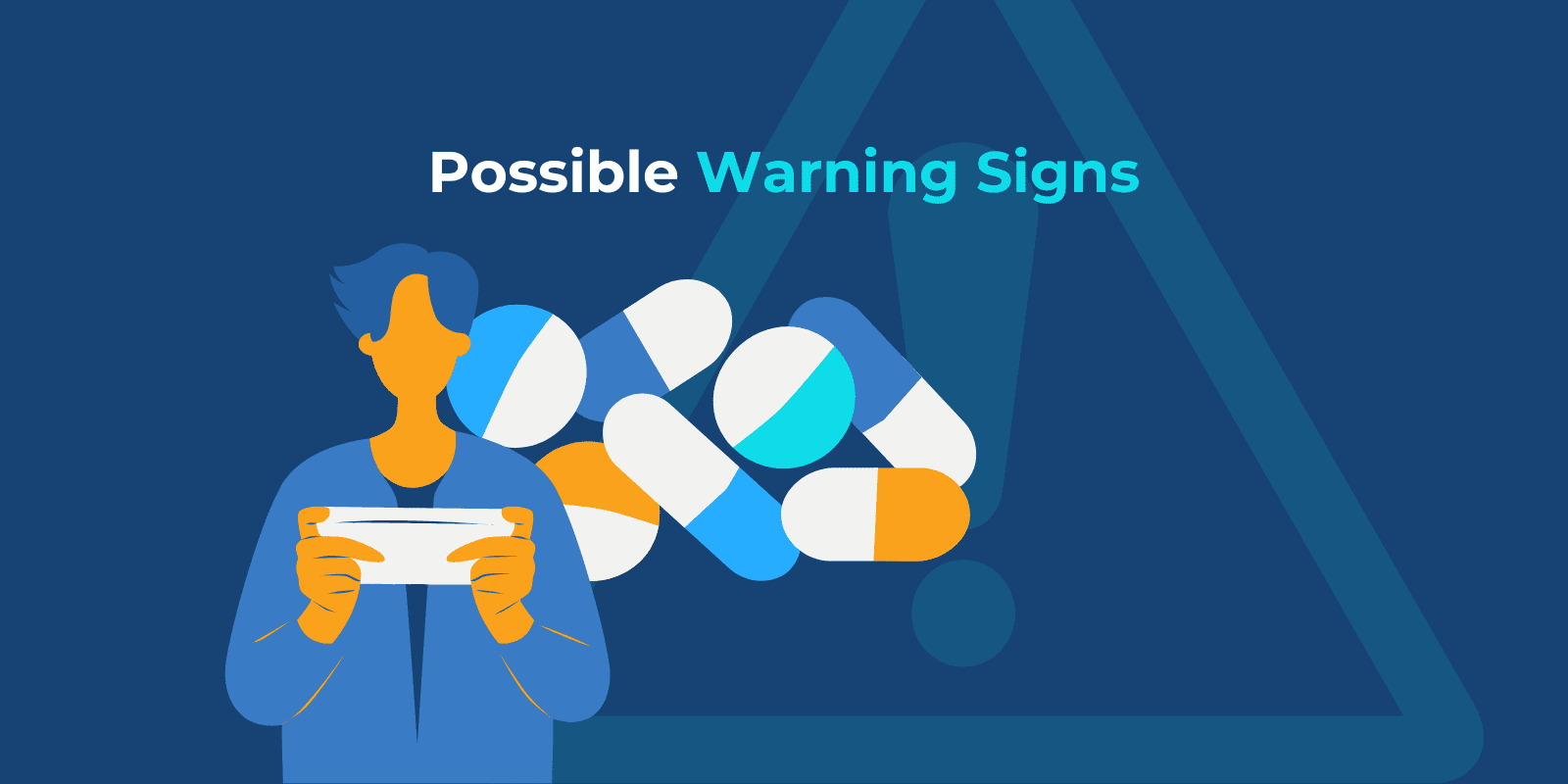
What Are The Warning Signs Of Teen Substance Use?
Warning signs of teen substance abuse may include:
- Isolating themselves frequently
- Loss of interest in things they once loved
- Poor hygiene; not taking showers, not brushing their hair, wearing the same clothes
- Bloodshot eyes
- Sleeping very much or very little
- Change in eating habits; eating more or less than usual
- Talking very fast, slurred speech, or saying things that don’t make sense
- Loss of memory
- Mood swings
- Lying or stealing
- Poor academics; declining grades, absence from school
- Having problems in relationships
- Poor concentration or lack of coordination
- Possession of drug paraphernalia
What Are The Effects Of Drugs On Teen Mental Health?
Often, drug use correlates with mental health issues.
A teen with a substance use disorder is likely to struggle with a mental health disorder such as depression or anxiety.
Many teens begin to use drugs because they are trying to cope with difficult emotions.
Sometimes drugs may make a person feel “numb” or help them suppress these feelings temporarily. However, they can worsen one’s mental health conditions and make these feelings more intense.
Drugs can also make teens more compulsive and cause them to continuously seek out the drug again and again.
They can also make you feel depressed, anxious, or paranoid.
Drugs also alter the brain.
According to the National Institute on Drug Abuse, many drugs such as cocaine, marijuana, and nicotine affect the brain’s “reward” circuit. Drugs take over this system and release large amounts of dopamine.
This high level of dopamine causes the brain to send out intense motivation to seek the drug again and again.
Over time, the ability to feel pleasure goes down. This can cause a teen to feel lifeless and unable to enjoy the things they used to enjoy.
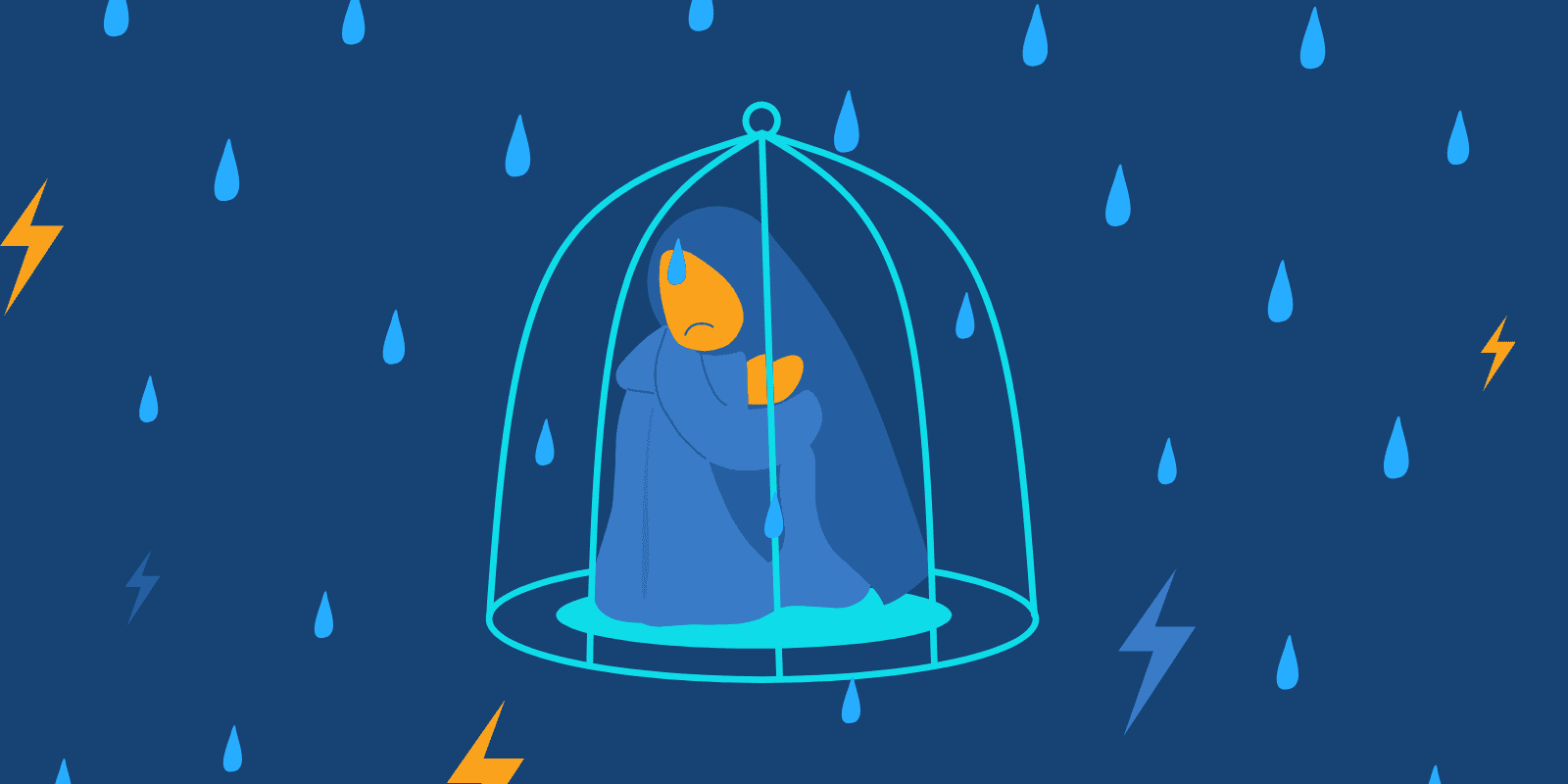
What Causes Substance Abuse During Adolescence?
Adolescents and teens often begin to use substances because of feelings of loneliness and sadness.
They may begin to use drugs to distract themselves from difficult feelings or boredom.
Because feelings are not resolved and rather distracted or “pushed to the side,” they intensify.
This suppression of feelings can create a dangerous cycle of substance abuse and cause adolescents to depend on these substances to feel normal.
An adolescent’s brain is also not fully developed, which can impact their decision-making and lead to unhealthy coping mechanisms.
The prefrontal cortex is a part of the brain responsible for functions such as decision-making, impulse control, problem-solving, and reasoning.
This part of the brain does not fully develop until the mid-twenties.
Because of this, they may be easily influenced by their peers and make unhealthy or irresponsible decisions.
Drugs and the developing brain lead to even more impaired judgment and more impaired risk-reward benefit.
Drugs essentially “hijack” the limbic system. This system controls physiological and psychological functions such as emotion, behavior, and memory function.
Many adolescents’ motivation for using drugs can also be to feel accepted and fit in. Even if teens begin to use drugs to experiment, it can quickly become a problem.
Some adolescents believe in the common misconception that drugs are a part of growing up. The reality is that any type of substance abuse is dangerous and leads to serious mental and physical health problems.
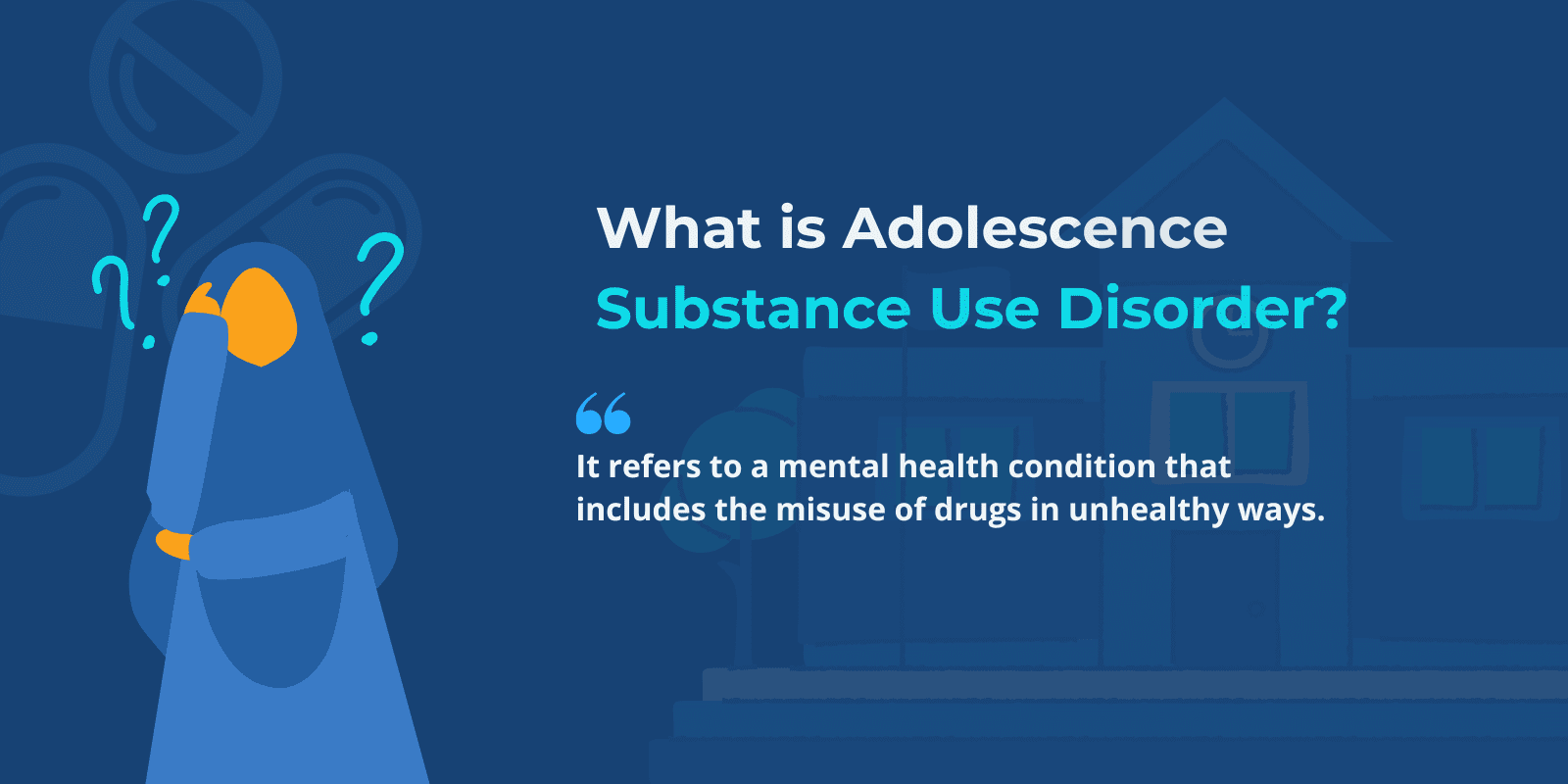
What Is Adolescent Substance Use Disorder?
Adolescent substance use disorder refers to a mental health condition that includes the misuse of drugs in unhealthy ways.
An identifying point of substance abuse is when the use of substances interferes with your daily life.
A substance use disorder can be defined by some factors, which include:
Gaining a tolerance: needing more of a substance to feel the effects
Withdrawal symptoms: feeling sick when you don’t use that substance
Consequences: determining if any legal or natural consequences come with the substance use
Damaged relationships: whether or not substance use affects relationships within one’s life
Mood changes: increased feelings of sadness, hopelessness, loss of interest in things you once loved
Substance use disorders are treatable. There are different types of therapy available for teens and adolescents struggling with SUDs.
Cognitive-behavioral therapy, or CBT, is one of the best therapies for substance use disorders.
CBT involves talking and creating skills around understanding initial events or triggers. It considers what led up to this behavior, identifies the behavior, and the consequences of these behaviors.
CBT can help create better coping skills to help guide your mind and behaviors.
It works well because it allows teens to create new habits and pathways in their minds.
One of the benefits of the developing teenage brain is that they are more apt to learn new things.
Many substance use disorder and drug addiction treatment programs encourage teens to attend support groups.
Support groups can be beneficial in offering ongoing support and encouragement throughout the recovery process.
It can help teens meet new people who may be going through similar challenges, have people to hold them accountable, and know that they aren’t alone.
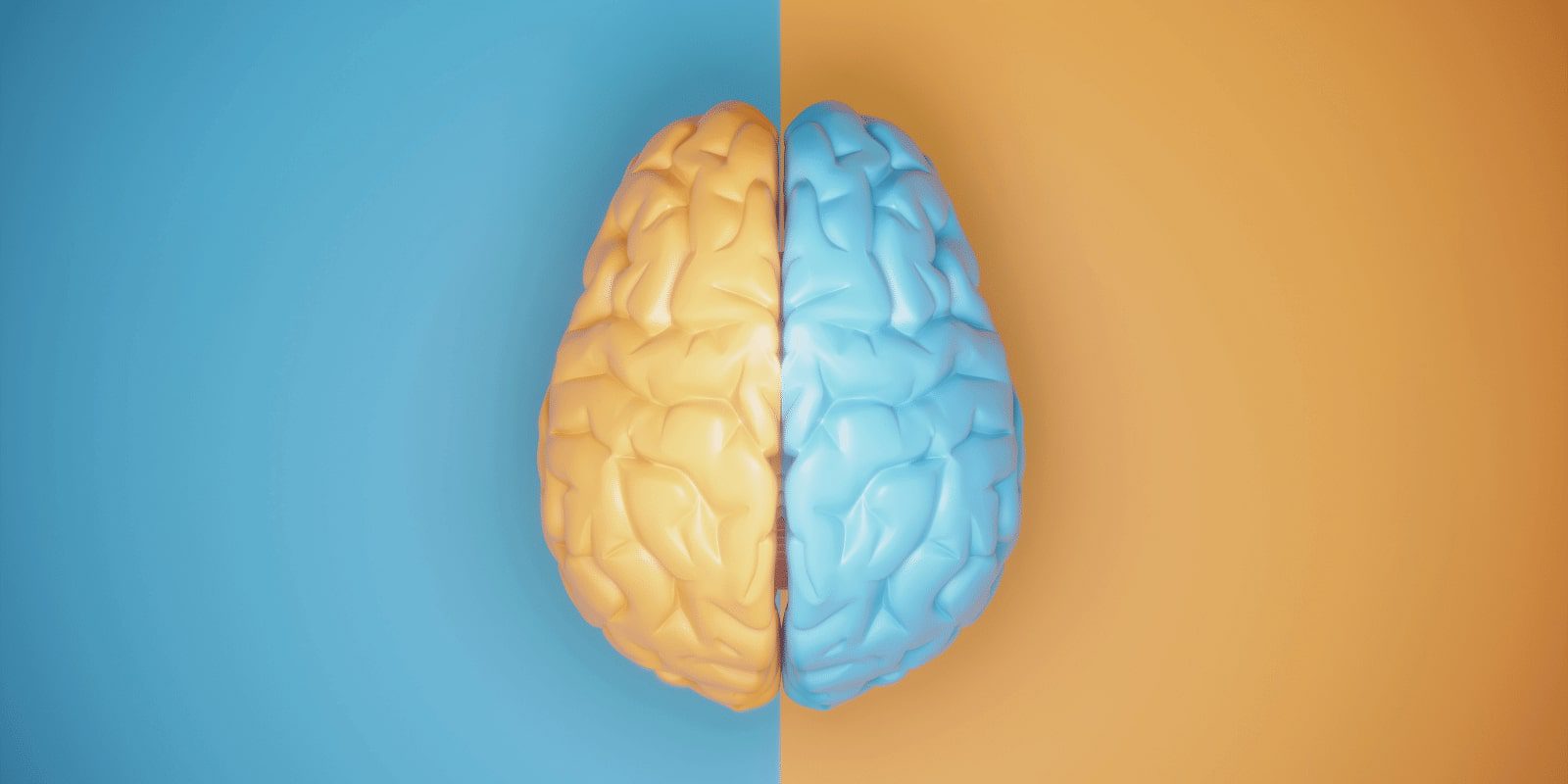
Why Are Adolescents At Risk For Developing Substance Use Disorders?
The transition from adolescence to young adulthood comes with many physical, emotional, and lifestyle changes.
The feelings that come with this transition can lead adolescents to turn to drugs as an escape or outlet.
An adolescent’s brain is wired to take risks and seek stimulation and rewards.
Because of this, it makes it easier for young people to fall victim to substance abuse.
Using substances during adolescence can easily alter the brain and put young people more at risk of developing substance use disorders and addiction.
Drugs interfere with the natural chemicals and communication in the brain. Once the brain adjusts to new levels, it seeks out the drug that initially caused these imbalances.
Over time, the drug is no longer used to create a “high” or euphoric feeling but rather to return the brain to a feeling of normalcy.
Since an adolescent’s brain is not fully developed, these alterations can take a tremendous toll on one’s health and well-being and create a dependency on substances.
How Many Teens Have Substance Use Disorders?
In the last year, in the midst of a pandemic, substance use disorders in teens have been on the rise.
Teens and young adults make up a large number of Americans who struggle with a substance use disorder. This can be because they are going through adolescence and gaining a new sense of identity.
Millions of teens and young adults need substance use support.
Substance use disorders are common and treatable. If you or your teen is struggling with a substance use disorder, there are many different treatment options available.
Drug abuse is dangerous for teenage brain development and their mental and physical well-being. Sandstone Care is here to support teens and young adults with mental illness and substance use disorders. Call (888) 850-1890.

